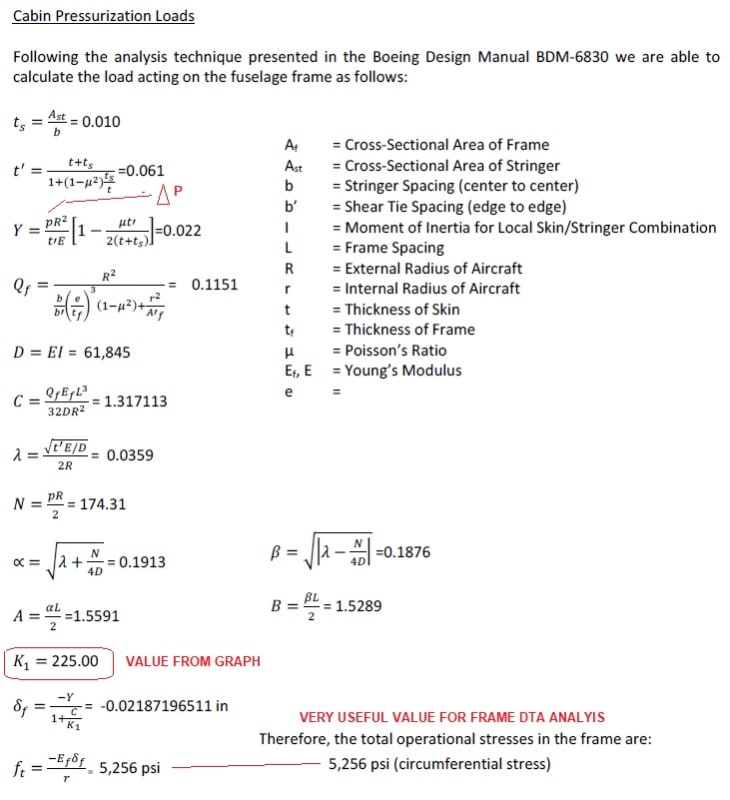Recently encountered a Boeing Design Manual Reference (BDM6830)... That provides the stress value on a frame given cabin differential pressure & various Frame / Stringer / Skin Material properties & Dimensions. Until - i can evaluate further - it seems an intriguing methodology to be used in DTA analysis for an aircraft where proprietary loads values are unavailable. I worked down the equations realizing that the equations pertain to the axis of some graph (that was not included). Thus without detailed explanation of the calculations nor the graph - its a useless methodology & reference. Has anyone seen or used this methodology?
.. Note: Prior to getting bombarded by Boeing proprietor warnings & "death-treats" by my fellow readers - Yes .. I am aware. But there must be an origin to this methodology that Boeing uses - some paper or report. It segregates pressurized loading of the skin & loading to the frame with inputs from the stiffness of the stringers.
- Any leads would be appreciated. & No .. I do not have access to the BDM - else I would not be asking.
.. Note: Prior to getting bombarded by Boeing proprietor warnings & "death-treats" by my fellow readers - Yes .. I am aware. But there must be an origin to this methodology that Boeing uses - some paper or report. It segregates pressurized loading of the skin & loading to the frame with inputs from the stiffness of the stringers.
- Any leads would be appreciated. & No .. I do not have access to the BDM - else I would not be asking.

